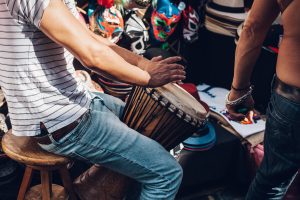Entering the world of event photography can feel overwhelming. With so many fleeting moments to capture and high expectations, it’s easy to feel pressured. One of the most common questions in event photography is: what’s the best ISO to use? Let’s break it down and make this process a little simpler.
Understanding ISO in Photography
ISO refers to the sensitivity of your camera’s sensor to light. A higher ISO means your camera needs less light to create a properly exposed image, while a lower ISO requires more light. Most cameras have an ISO range that can vary from 64 to 25,600, or even higher.
It might seem tempting to set your ISO to the highest number, such as 25,600, but there’s a catch.
The Trade-Off: ISO and Noise
The main issue with increasing ISO is the introduction of noise. As you push the ISO higher, you might notice a grainy, pixelated effect that decreases image clarity and sharpness. While camera technology has improved, reducing noise at higher ISOs, it’s still something to consider.
Event Photography Challenges
Events often take place in less-than-ideal lighting conditions. Venues may be dimly lit, or lighting might be intentionally set low to create a certain atmosphere. In these situations, raising your ISO is necessary. You’ll likely need to use ISO settings around 3200 or even 6400 to capture clear, usable images.
While higher ISOs come with the downside of noise, it’s better to have a noisy image than to miss the shot entirely. That being said, you should still aim to minimize noise whenever possible.
Solutions for Reducing Noise
There are two main ways to manage noise in event photography: using a flash and post-processing noise reduction.
- Using a Flash: A flash allows you to use a lower ISO while still achieving proper exposure. With the right flash, you can maintain image quality while avoiding excessive noise. I personally use the Godox V1, which is simple to use and effective for event photography. A flash can also be helpful when dealing with colored lighting in a venue that doesn’t flatter the subjects you’re photographing.
- Post-Processing Noise Reduction: If you do end up with noisy images, Lightroom’s noise reduction tool—especially the AI-powered version—can help smooth out the grain and restore detail. However, while noise reduction is useful, it’s not a complete fix. It’s always better to control the ISO and lighting in-camera rather than rely on editing afterward.
What’s the Best ISO for Event Photography?
Ultimately, the best ISO for event photography is the one that allows you to get the shot while keeping noise to a minimum. While there’s no one-size-fits-all answer, it’s essential to balance your ISO settings with techniques like using flash and post-processing tools to ensure the best results.




